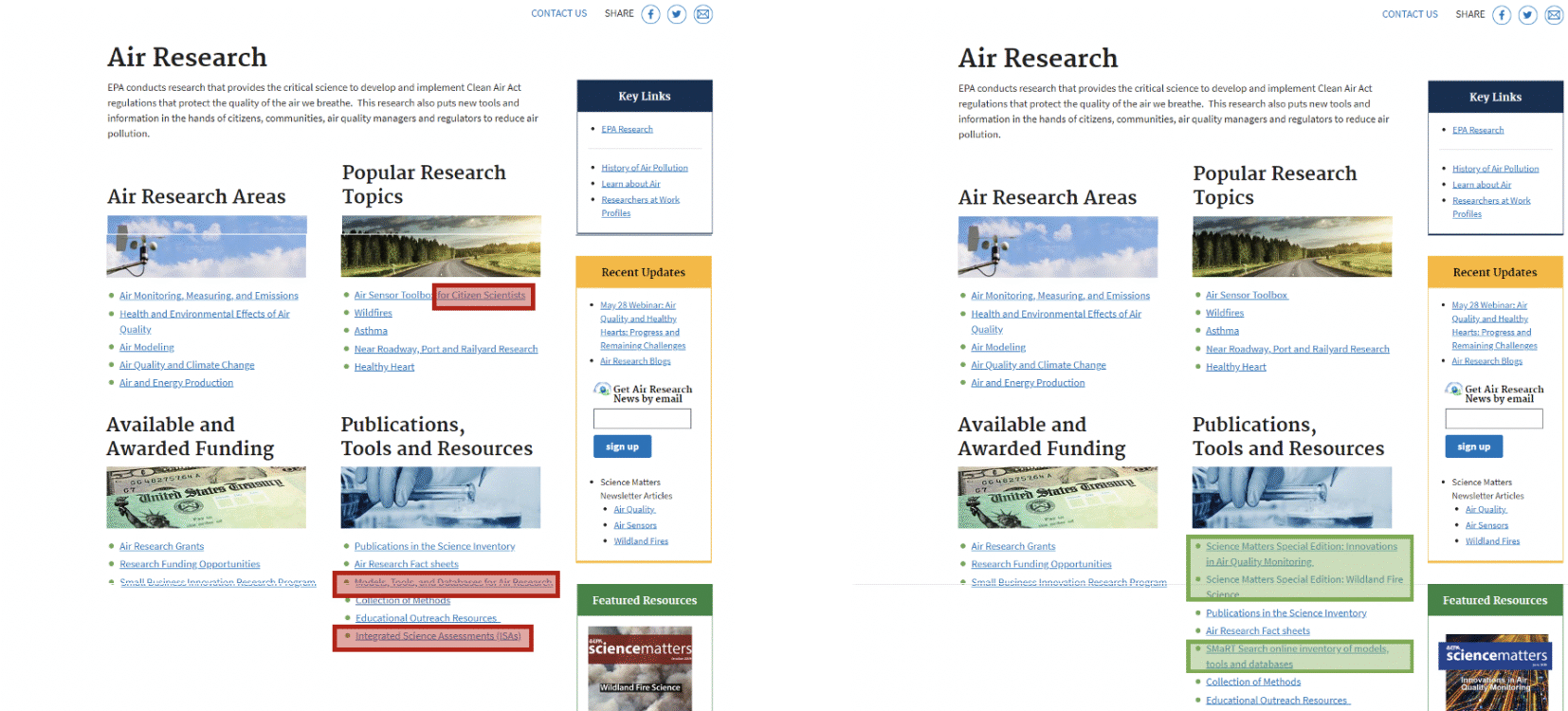Authored by EDGI’s Website Monitoring Team
Welcome! This blog is part of the EDGI Website Monitoring Team’s “Change of the Week” blog series. The purpose of this series is to highlight interesting changes we have observed in the language used on federal websites, or access to them. We want to share these changes to encourage public engagement with and discussion of their significance, as well as understanding of the ephemeral nature of website information. This week’s change is from earlier this summer and features a link removal from the EPA’s Air Research homepage.

The text highlighted in red was removed; the text highlighted in green was added. These changes occurred between June 25, 2020 and June 29, 2020.
What happened? The main change of interest here is the removal of a link to “Integrated Science Assessments (ISAs)” from EPA’s Air Research website homepage. In addition to that link removal, the previous link text and link to “Models, Tools, and Databases for Air Research” was replaced with the “SMaRT Search online inventory of models, tools, and databases.” The previous models, tools, and databases URL now redirects to the SMaRT Search online inventory URL.
Why we think this is interesting: Our website monitoring findings often reveal reduced access to information, and sometimes reveal increased access to information. The two main changes here are interesting for opposite reasons: one is a notable reduction in information access while the other is an improvement.
The Integrated Science Assessments (ISAs) are the assessments that provide the scientific foundation for the National Ambient Air Quality Standards (NAAQS) for the six “criteria” pollutants. These are extraordinarily important standards for human health. Developing and implementing the NAAQS were some of EPA’s first activities nearly 50 years ago, and the standards have been updated every few years to reflect the most recent scientific understanding of these pollutants and their human health effects. ISAs are the EPA’s largest and most comprehensive syntheses of research on the six criteria pollutants. They are critical resources for many of EPA’s activities, namely regulating the criteria pollutants, and also for informing current EPA research and setting directions for new research. We think it is notable that a user can no longer navigate from EPA’s Air Research homepage to these essential air quality and human health research compendia.
The redirection of the “Models, Tools, and Databases for Air Research” webpage to the “SMaRT Search online inventory of models, tools, and databases” webpage is interesting for a different reason. The change appears to mostly foster an increase in access to information. While the old page had allowed users to browse titles and descriptions of 29 models, tools, and databases related to air research, the new search interface provides more information about each entry that relates to user search terms, and returns 57 results if you search for “air research.” The SMaRT Search online inventory appears to contain information about a total of 139 models, tools, and databases.

